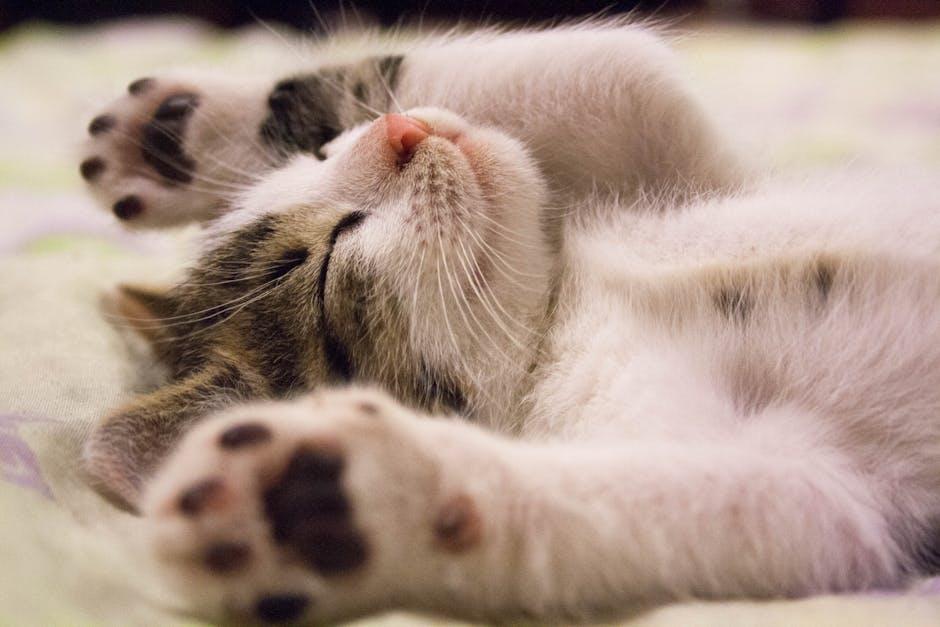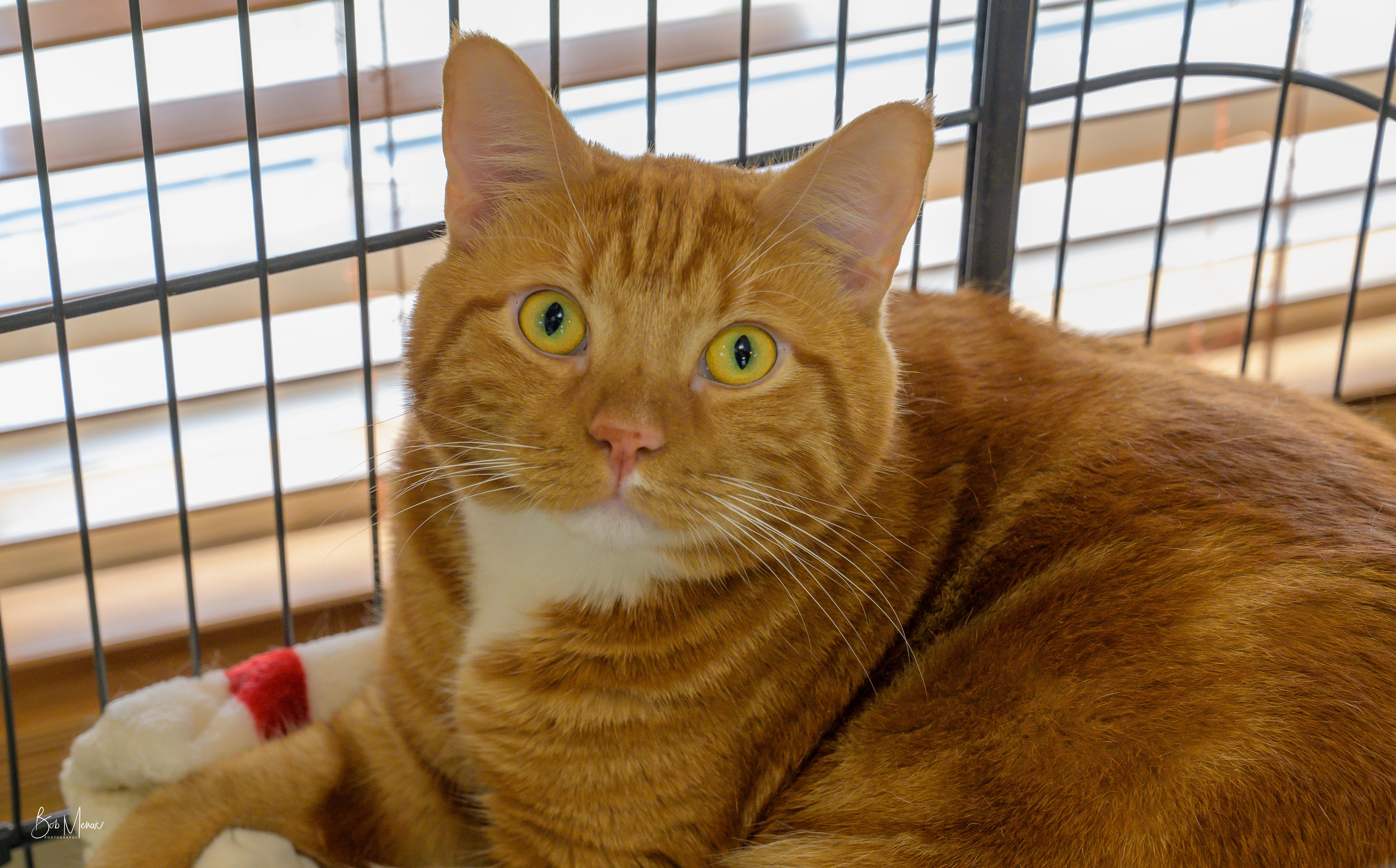In the world of pet ownership, understanding the nuanced needs and behaviors of our feline companions is crucial. “My Cat Cage” delves into the intriguing and often misunderstood topic of caging cats, exploring both its practical applications and potential benefits. While the notion of a cage might conjure images of confinement, it can actually serve as a supportive environment for various situations ranging from travel to managing behavioral issues. By carefully crafting these spaces, pet owners can ensure their cats receive the right balance of comfort and security. Join us as we navigate the ins and outs of this intriguing subject, demystifying how and when a cage can be an effective tool for enhancing the well-being of your furry friend.
Table of Contents
- Choosing the Perfect Cat Cage for Your Feline Friend
- Understanding Your Cats Needs for Comfort and Security
- Top Features to Look for in a Cat Cage
- Recommendations for Budget-Friendly and Durable Cat Cages
- Q&A
- Closing Remarks
Choosing the Perfect Cat Cage for Your Feline Friend
Finding the right cat cage for your feline friend involves balancing comfort, size, and practicality. Cats, by nature, enjoy cozy spaces, but they also need enough room to stretch and move around comfortably. Start by ensuring that the cage is spacious enough for your cat to stand, turn around, and lie down comfortably. It’s not just about fitting your cat’s body size but also allowing some extra space for toys or a small blanket to make the environment feel more homely.
Consider the materials of the cage. Durability is essential, particularly if your cat is prone to scratch. Opt for a cage made from strong, pet-safe materials that can withstand your cat’s natural instincts. Steel wire cages after sturdy bases are excellent choices. They ensure easy cleaning and are more long-lasting than plastic alternatives. Also, look for a cage with a secure lock system to prevent any unexpected escapes.
- Portability: If you need to travel, choosing a cage with handles or wheels can make transportation easier.
- Accessibility: Multiple doors or top access can make it easier to reach your cat without hassle.
- Ventilation: A well-ventilated design keeps your cat comfortable and reduces anxiety.
| Feature | Description |
|---|---|
| Size | Allow room for movement and accessories |
| Material | Sturdy, chew-proof, and easy to clean |
| Portability | Handles or wheels for easy travel |
think about buying additional accessories to enhance your cat’s cage experience. A soft, washable cushion can provide extra comfort, while a hanging toy or scratch pad can keep your cat entertained. Personalizing your cat’s cage not only makes it more inviting but can also help reduce stress, making the transition into their new space smoother.

Understanding Your Cats Needs for Comfort and Security
Creating a secure and comforting environment for your feline friend is essential for their well-being. Cats require a combination of physical and emotional security to feel truly at home. This often starts with a soft and inviting place to sleep. A cat’s sleeping area should be outfitted with soft bedding that carries familiar smells and sounds, helping them to feel at ease [[1]]. Consider placing your cat cage in an area free from loud disruptions, where they can retreat to when they need a break from the hustle and bustle of daily life.
Your presence is another cornerstone of your cat’s sense of security. It might surprise you to learn that cats view their owners as a source of comfort, akin to a security blanket [[2]]. This connection, though not always vocally expressed, is a strong bond rooted in trust. To nurture this bond, spend quality time near your cat’s cage, engage in gentle interactions, or simply keep them company. These small gestures reinforce their attachment to you, ensuring they feel safe and loved.
To enhance this environment, offer your cat a variety of comfort items inside their cage:
- Soft toys for cuddling and interactive play.
- Blankets with familiar scents woven in.
- Cat-safe plants or herbs such as catnip, which can provide natural relaxation.
Understanding why your cat might stop displaying behaviors like sleeping with you is also part of ensuring their comfort and security. Such changes often indicate a need for additional reassurance rather than a lack of affection. When shifts occur, ensure that their food, water, and litter box needs are met, and give them space and time to adapt to any new changes in their environment [[3]].
Maintaining your cat’s comfort and security might involve seemingly small actions that collectively foster a stable and reassuring habitat. By paying attention to their unique needs, you can ensure that your cat’s cage not only shelters them but also becomes a sanctuary of warmth and peace.

Top Features to Look for in a Cat Cage
When selecting the ideal cat cage, it’s essential to focus on features that prioritize your cat’s comfort and safety. Space is a top consideration, as cats crave room to stretch, climb, and explore. A cage should be large enough to accommodate your cat’s movements without making them feel cramped. Look for designs with multiple levels or platforms, to simulate a cat’s natural instincts to climb and perch.
- Sturdiness and Durability: Ensure that the cage is constructed from durable materials, as cats love to explore their boundaries. A robust frame can withstand playful antics and offer long-lasting use.
- Ventilation: Proper airflow is crucial to maintain a comfortable environment inside the cage. Look for mesh panels or strategically placed vents.
- Safety Features: Check for secure latches or locks to prevent escapes, and smooth edges to avoid any injuries during play or rest.
The addition of built-in storage is a practical feature for any cat owner. This allows easy organization of essential items like food, water bowls, and grooming tools. Some cage designs incorporate understated storage components that blend seamlessly without compromising space or style.
Convenience shouldn’t take a back seat, so explore cages with features like removable litter trays and easy-to-clean surfaces. Here’s a quick checklist table:
| Feature | Importance |
|---|---|
| Removable Litter Tray | High |
| Easy-to-Clean Surfaces | Essential |
| Built-in Storage | Helpful |
Lastly, consider the aesthetic aspect of the cage. While functionality should not be compromised, an attractive design allows the cage to fit well in your living space. Many options feature stylish finishes and modern designs that can complement your home décor, making it both a practical pet accessory and a chic addition to your interior.

Recommendations for Budget-Friendly and Durable Cat Cages
When it comes to finding a budget-friendly and durable cat cage, there are several options that can cater to both your wallet and your furry friend’s needs. The key is to look for materials that guarantee longevity without compromising on comfort. Metal and high-quality plastic constructions are your best bet, as they offer excellent durability. These materials are capable of withstanding claws, bites, and the occasional playful tumble.
One of the primary considerations is the size of the cage. Ensure it provides ample space for movement, with separate areas for play, rest, and feeding. Look for cages featuring multiple levels or platforms, which can keep your cat entertained and help maximize vertical space even in smaller areas. Ideally, a good model should offer easy assembly and disassembly, allowing you to set it up or pack it away quickly, especially important for periodic cleaning or relocation.
- Sturdy Construction: Opt for metal frames that resist rust and ensure stability.
- Portability: Consider foldable options for easy storage and transport.
- Ventilation: Ensure there are enough mesh panels or openings for airflow.
Additionally, some cages come with thoughtful extras like removable litter trays, easy-access doors, and chew-proof coatings on exposed parts. These features enhance the practicality of the cage, making maintenance straightforward and ensuring your cat’s comfort and safety. For outdoor use, some cages can double as enclosures, allowing your cat to enjoy nature securely[[2]].
| Feature | Description |
|---|---|
| Material | Metal or hard plastic |
| Assembly | Quick and tool-free |
| Extras | Removable trays, multiple doors |
don’t forget to personalize your cat cage with cozy bedding or favorite toys, turning it into a sanctuary your cat will love. With the right choices, you can ensure a stylish, safe, and economical setup that provides peace of mind and plenty of fun for your feline companion.
Q&A
Q&A: Everything You Need to Know About “My Cat Cage”
Q: What is the purpose of a cat cage?
A: A cat cage serves multiple purposes, such as providing a safe and secure space for your cat when traveling, during vet visits, or when introducing a new pet into the home. It can also be used as a temporary area for quarantine when your cat is sick or recovering from surgery.
Q: How do I choose the right size cage for my cat?
A: The ideal cat cage should be spacious enough for your cat to stand, turn, and lie down comfortably. Consider your cat’s size and length when choosing a cage. It’s also crucial to ensure there is enough room for water and food dishes, as well as a small litter box if needed.
Q: What features should I look for in a high-quality cat cage?
A: Look for a sturdy cage with secure locking mechanisms to prevent accidental escapes. It should also have good ventilation for airflow and be easy to clean. Features such as removable trays, soft bedding, and multiple access doors can add to the convenience and comfort for both you and your cat.
Q: Can a cat cage be used for training purposes?
A: Yes, a cat cage can assist in training by helping to set boundaries and limit access to certain areas during initial training phases. By associating the cage with positive experiences like treats or play, you can help your cat adjust more comfortably to its environment.
Q: How do I make the cat cage a positive environment for my pet?
A: To make the cage more inviting, add a comfortable blanket or a small bed. You can include familiar toys or a few items that carry your scent to make your cat feel at ease. Regularly offering treats and spending time near the cage to reassure your cat can also create a positive association.
Q: Are there situations where using a cat cage might be discouraged?
A: It is generally not recommended to leave your cat confined in a cage for extended periods, as this can lead to stress and anxiety. The cage is best used temporarily or as a designated safe space, rather than a permanent living solution.
Q: How do I introduce my cat to a new cage effectively?
A: Start by placing the cage in a familiar environment and leave the door open, allowing your cat to explore freely. Provide treats and toys inside to encourage your cat to enter on its own. Gradual introductions and plenty of patience are key to helping your cat get comfortable with the new cage.
By carefully considering your cat’s needs and ensuring the cage is used appropriately, you can turn it into a beneficial tool for both travel and training, ensuring your feline friend feels safe and secure.
Closing Remarks
As we conclude this exploration of creating a comforting haven for your feline friend, let’s remember that a cat cage doesn’t have to be a cold or confining space. By incorporating simple touches like familiar bedding, safe toys, and a soothing routine, you can transform it into a personal retreat for your pet. Encouragement and patience are key as your cat adjusts to their temporary home; after all, their comfort and well-being are paramount. With the right approach, your cat cage will serve as a safe space for relaxation and recovery, ensuring that your beloved companion remains both content and secure.







0 Comments